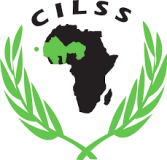

- Disaster Risk Reduction
- Capacity Development
- Service Delivery
Project background
Burkina Faso is a country facing climate risks. Its monsoon regime is associated with high temporal and spatial variability of rainfall. In recent years, extreme rainfall and severe flooding have devastated populations. Consequently, the country is preparing to consolidate warning services and reduce impacts on vulnerable communities.
WMO has been supporting the Agence Nationale de la Météorologie (ANAM) and the Directorate Generale des Ressources en Eau (DGRE) to improve climate services through ClimSA and meteorological and hydrological services through CREWS Burkina Faso. Building on this, technical advisory support is being provided to the Government of Burkina Faso within the framework of the national GCF-financed HYDROMET project (P164078), funded by the World Bank.
This technical assistance is aimed at supporting the modernization of meteorological infrastructures, and establishing a robust Early Warning System for floods (Sytèmes d’alerte précoce crues et inondations, SAPCI). In addition, cooperation between the main national institutions linked to warning systems is promoted and forecasting and warning operations processes are improved, prioritizing operational training. The support will build on the existing foundation, improve observation standards and their use in forecasting systems, foster cooperation between partners and projects to maximize technical support to national institutions, and increase operational training.
Objective(s)
To support Burkina Faso in modernizing meteorological services and developing flood early warning systems and services at national and local level.
Outputs
- Modernize infrastructure for meteorological data management and forecasting.
- Update hydrological data management system through interoperable solutions complying with WIGOS/WHOS.
- Develop and implement flood impact-based forecasting systems in vulnerable urban areas.
- Improve existing national flood forecasting systems (FANFAR, WAFFGS, VOLTALARM) and have a national framework for flood monitoring and forecasting adopted by DGRE.
- Develop operational procedures for hydrometeorological early warning systems in collaboration with ANAM, DGRE, DGPC, CONASUR and SAP.
Expected outcomes
- Meteorological and hydrological services adapted and delivered in a coordinated and timely manner to support early warnings.
- Established an early warning system for floods (SAPCI) based on forecasts adapted to local conditions and supported by standardized operational procedures adopted by relevant institutions.
- Developed fundamental and operational capabilities on analysis, monitoring and forecasting of different types of floods.
Achievements
- Training plan for weather forecasters, and data management and informatician ANAM staff.
- National data collection and mapping of major flood zones are developed through user consultation processes.
- Weather forecasts generated by ANAM integrated into the flood forecasting systems.
- Development of flood impact-based forecasting for urban areas under implementation.
- FANFAR and Voltalarm enhanced by integrating historical and real-time observations from ANAM and DGRE and new meteorological forcings.
- Joint operational training on flood forecasting systems by FANFAR and Voltalarm in coordination with AGRHYMET, SMHI and CIMA.
- Workshop on sharing of experience on operational procedures for flood forecasting and warning by ANAM, DGRE, DGPC, CONASUR in Sweden and Italy.
- Region:
- Region I: Africa





